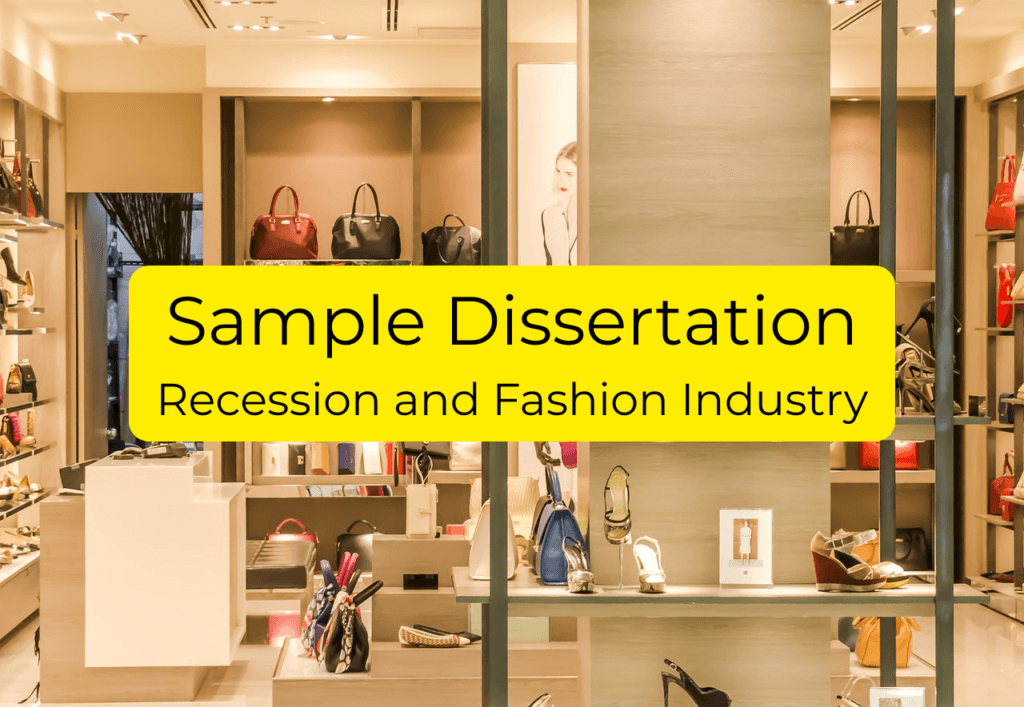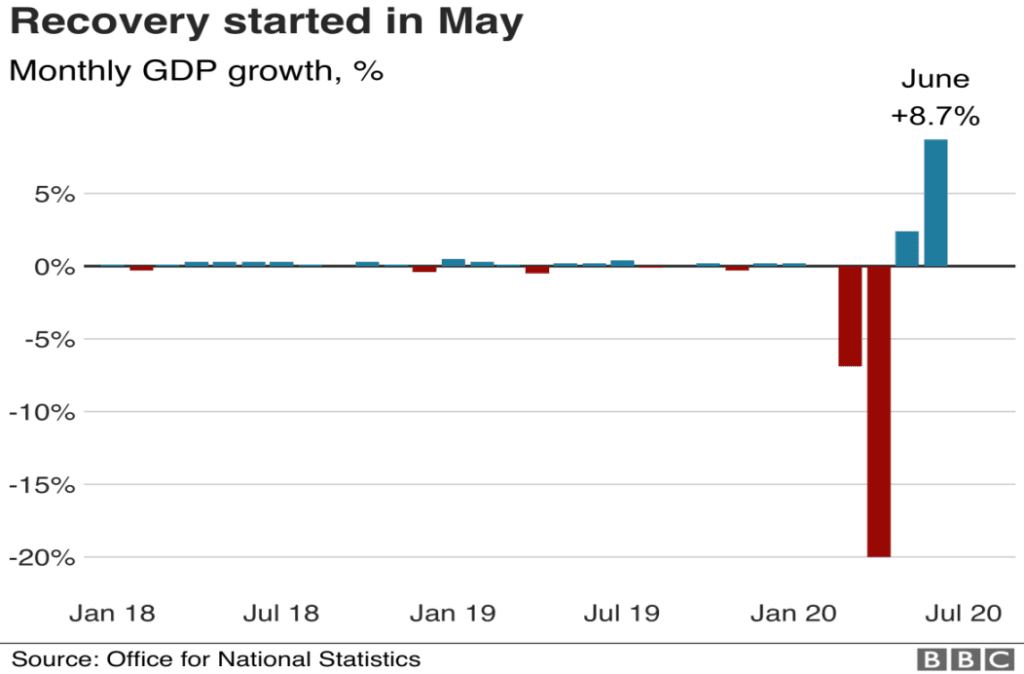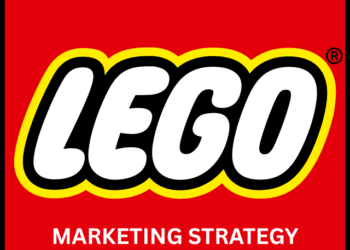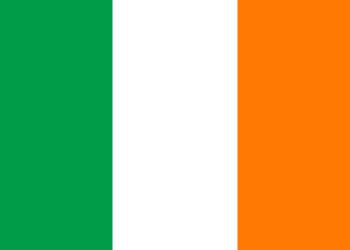Sample Dissertation: Impact of Recession on Fashion Industry
- 21 March 2025
- Posted by: OAH
- Categories: Business & Management, Dissertation

Looking for a sample dissertation example on the impact of economic downturns? This detailed analysis explores how the recession has affected the fashion industry, focusing on challenges faced by UK fashion brands. Ideal for business and economics students, this sample provides insights into market trends, brand resilience, and strategic responses. Whether you’re conducting research or drafting your own dissertation, this example will enhance your understanding of economic impacts on global industries.
Need Dissertation Writing Help? Contact us for Complete Dissertation Help Online!
Sample Dissertation Topic: A critical analysis on the impact of recession on fashion industry
Abstract
In this research the main purpose is clothing market macro environmental considerations are those outside small enterprises and their rivals. These external forces are less regulated by business owners and have little effect on their modification. Small businesses should instead respond to certain macro environmental conditions, including consumption characteristics, infrastructure, the role of public authorities and economics. The way small businesses respond to macro environnemental conditions decides whether they can distinguish from main rivals and whether they achieve sustainability overall. This study was carried out to assess the impact on designer manufacturers based in UK following the recent economic downturn. It will also explore local policies, emerging technology and evolving market models to determine if they have contributed to address the issues facing designers in a recession. Many enterprises have not accessed government systems designed to support business during the pandemic, according to the British Fashion Council. The government wishes to help brands renegotiate rentals and payments and reduce taxes and raise financing for SMEs.
Acknowledgement
I keen to show my gratitude of concerned faculties of my department for giving me a chance to do a research on this major topic. On other hand, continuous encouragement and gratitude of my team leader also help me to reach every important aspect of this project utterly. I also show my gratefulness to my departmental head for allowing me to continue with this project. I also want to thank other involved person who helped me to complete this research performance by providing appropriate information, their suggestion, support and motivation during research process.
At the end, I also wish to thank my friends and family members who have provided their assistance indirectly or directly for completing my research work successfully.
Table of Contents

1.0 Introduction
1.1 Introduction
Clothing has defied the downturn with a 1.4 per cent rise to 41.3 billion pounds in 2009 and a projected 1.5 per cent to 41.9 billion pounds in 2010. Sales remained optimistic in terms of sales, while growth was restricted due to weakened consumer spending. Mintel examines the customer outlook towards clothing spending and what is in the future during this time. The clothing industry has defied the downturn, with the economy rising by 1.4 percent to £41.3 billion in 2009. While growth was restricted by lower customer demand, sales stayed in the good area. Last year, many people didn’t avoid spending on clothing, but did not change their buying patterns. And while many have straightened their stickers, they have not stopped purchasing clothes completely. The love of fashion and concern of young people for the slump continued to push their purchases, with one person out of five 16-24 investing more on clothing last year than they did. People want a deal: almost half customers purchase clothing on sale or on exclusive offers. However, stores must not be discounted because price discounts seldom generate goodwill and only erase margins. In 2010, almost 20 per cent of the shoppers expect to spend more on clothing, almost double the proportion they spend more in 2009.
Around 60% of all (Bed Linen) garments produced in India are exported to international markets such as EU, USA, and Japan. One of the nation’s largest employers are textile export houses. The American and the EU’s economic slow-down have impacted Indian textile industry, causing a dramatic fall in the country’s exports of clothing. If you take a look at the cost-structure contrast, the time limit for European orders to UK exporters is 5 or 7 weeks, given that cargo movements are by sea and take more time when for Turkey’s orders, the order can be carried out within a week as transport is by road. Recession applies to the state as economic downturns occur as a result of circumstances such as the destruction of new corona virus. The Covid-19 epidemic has led to economic contraction worldwide during the current century. It has brought a significant economic downturn, leading to the first recession in the United Kingdom since the past 11 years. The governments of different countries have decided to lock down and close down commercial practices and activities to limit the dissemination of new viruses. As of July 2020, the economic growth rate in UK decreased to -19.8%, according to the most recent record. In Britain, too, the GDP growth rate is -11% in 2020. In view of the decreased rate of GDP growth, it can be analyzed that the production domain has been restricted due to the spread of corona virus in various business institutions. In this regard, it can also be seen that owing to Covid-19 the production activities of the apparel industry were also closed. The contraction has led to the nation and has also greatly affected customer buying habits. This has an effect on the apparel industry’s economic growth. This report will also describe the influence of recession on the fashion industry and its activities.
1.2 Background of the study
The 2008 financial crisis may have ended, but global business outcomes and customer behaviour have rocked the ensuing slump and contraction in the world economy (Turcan et al. 2020). While there have been a great deal of discussions about the luxurious products market, and the effect on the crisis, the slowdown has influenced a vast number of companies worldwide. Certain people argue that the recession had no effects on the market, whilst others claim that the selling of luxury products after the crisis undoubtedly slumped, but that the effect was only short-term. In reality, not only from the media but even the finance market, market analysts, investment managers, and even consultants seem to receive a high amount of coverage on a daily basis, considering the relatively limited scale of this sector. In addition, the world’s economic press with a focus on the industry and its key stakeholders, the MFGs such as the “LVMH, Richemont and PPR, or independents” like “Hermès and Burberry closely track this market”. While the global economy is still in a slower growth environment, with many consumers stepping back on consumption, luxury goods sales have shown no visible signs of failure. The fitness and wellbeing of their workers and clients must become a top priority as companies’ worldwide deal with the COVID-19 pandemic. Be it by handing over the plants to provide facial masks or hand scaffolding, contributing goods and resources to health personnel, or assisting staff to find transitional jobs within recruiting firms, clothing and design companies have already taken use of their properties. Making sure that the company survives and flours after this unforeseen shock is critical, as our colleagues stress “Safeguarding our lives and livelihoods: the need of our moment” in a recently published post.” In the UK, the beauty, clothing and design industry produces an annual income of some $600 billion and hires more than four million employees (Kodžoman 2019). Clothing and fashion enterprises must take rapid action to safeguard the continuation of operations, reduce downs and take steps forward with the business-model adjustments that may be needed as a result of this interruption.

Figure 1.1: Official recession of UK
(Source: bbc.com, 2019)
Even when in the past decade the clothing and fashion industry, particularly in the US market, has been facing difficulties (through the combination of recession post-shocks, intensified advertising strength, channel changes and a real estate surplus), in three years, the value and price formats have been on the way to steady, if only slower expansion, with occasional bright spots (Chakraborty, and Biswas, 2020). The condition is terrible today. 75% of the publicly-listed North American fashion and clothing firms will find themselves in negative EBITDA or inexhaustible net debt-to-EBITDA ratios after three-month shop closures based on existing earnings conditions before interest, royalties, deprive and amortization.
Although it is too soon to measure the COVID 19 tax on the fashion market, some of the pillars of the sector were surely rocked by the pandemic:
1.3 Research rationale
Due to higher instability, the global downturn and the economic crisis, the macro situation has been taken more and more account in recent years (Geczy, and Karaminas, 2017). These aspects can only pose a major threat to companies, but can also produce many openings an organization can exploit. For example, if a company can evaluate the existing climate and forecast future developments, it can be better positioned than its rivals in the market to react to environmental changes. Therefore, it is increasingly important to recognize and work with the Macro Environment, that is to say, the global environment within which the company exists, so as to maximize opportunities and minimize the risks faced by the organization. That is, a macro scan will help us recognise different organizational opportunities and risks. The UK clothes retail industry is affected by a host of macro environmental influences. The PEST or the political, economic, social and technological factors which contribute to environmental screening are known as these factors.
A host of shifts in their political climate have occurred in recent years in the British textile retail industry. The first reform was the recent enlargement of the EU territory which made imports and exports easier between different EU countries. This trade between any of these countries has made legal agreements and established new operations and stores more appealing than ever before. The second adjustment is the change that is caused by the global economic crisis in interest and government taxes (Brydges, and Sjöholm, 2019). The government has taken the initiative to stabilize financial markets and improve the economy, including partial nationalisation of certain banks, cutting VAT and suspending borrowing laws in the public sector. So, I have to say it. In March 2009, the Bank of England lowered the interest rates by just 0.5 percent at record time. In order to start the recovery, the Government has launched the more aggressive strategy of quantitative easing. The effect of this government strategy has brought the customer to a higher degree of disposable income, thus facilitating retail activities. For the other hand, as interest rates inevitably start to climb, the risks to medium-market luxury retailers like Massimo Dutti may be increased quite suddenly and dramatically.
Since mid-2008, employment has steadily increased to 7.8% before the second half of 2009 and could grow to more than 10% in 2010. The second quarter of 2009 saw unemployment rates (18-24 years of age) above 17 per cent which will begin to increase in the short run. This greatly affects the buying power of the parties and thus reduces a major market niche for premium stores in the midmarket sector (Pedersen et al. 2020). Many of the customers have adjusted their way of shopping clothing and these changes are mostly caused by reductions – by paying fewer, mostly by purchasing inexpensive clothing or by buying value retailers or cheaper stores. According to a study carried out by Mintel around one person in four has not changed their clothing shopping patterns since the recession began, and many shoppers, and the major changes are all linked to savings, including saving less, shopping more, not shopping for a complete amount, buying more or cheaper retailers. This reduction in consumer spending suggests that the consumers would want to spend more on value stores than luxury retailers in the middle sector.
1.4 Research Aim
Several aims are set in this research. First, in view of market mood and lesson of other areas, we discuss the effect of COVID-19 on the United Kingdom’s apparel and fashion industry. Secondly, it is proposed an immediate package of measures to ensure stability of industry. Then, after the rebound, we are examining the medium-term steps to reduce the downside for the second half of 2020 (Lavanga et al. 2020). Lastly, it discusses longer-term measures to make businesses succeed in the market world of post-viruses.
1.5 Research Objectives
- To evaluate the activities in the UK mode industry during the recession situation
- To establish strategies to solve the recession situation by various retailers to enhance their economic growth rate.
- To emerge expertise on the recession term using previous studies
- To review the effect of recession on global fashion market in the UK.
1.6 Research Questions
- How will the disadvantages found by industry in decline be mitigated?
- How did the luxury retailers operate through the recession?
- What is the sense of recession, in UK market sectors?
- What are the pitfalls faced by various retailers, in the recession case?
1.7 Research Hypothesis
H1: The challenges facing apparel companies in the UK as a result of Covid-19’s recession.
H0: As a result of the recession of Covid-19 in the UK, clothing producers face no obstacles.
H2: The main motivation for pandemic business activities is to strive for survival of the industry.
H0: The greatest incentive for pandemic company is not to seek the industry’s sustainability.
H3: Domain production was limited due to the spread of corona virus in various business establishments.
H0: Domain production in numerous business establishments was not restricted by the spread of corona virus.
H4: Some instances show that recession has caused a significant economic downturn
H0: Some cases indicate no recession which has led to a considerable economic decline
1.8 Conclusion
It is also possible for all of these merchant companies and indeed Irish indigenous retailer to deal with such uncertainty on the monetary market to be a tough operating period during the next period. The propensity of any slowdown to influence Irish economy, albeit transient, would probably affect Irish consumers’ purchasing patterns in the UK and could also affect the expenditure power of workers and consumers in the near future, if Brexit affects many regular Irish indigenous trading firms. In short, the timeframe and potential trade relationships which the United Kingdom would have with the rest of the EU seem to be unsettled before there is certainty in the economy.
1.9 Structure of the research

Figure 1.2: Structure of the research
(Self Created)
2.0 Literature review
2.1 Introduction
A profound analysis and perspective backed by a variety of evidence are included in this market study. Introducing and high quality content is also presented to offer a summary of the problems addressed. Thousands of employment was slowed down as businesses were confronted by growing recessionary pressures. And countries with industrialized countries have also been severely affected by the slowdown in the foreign lead. Initially a banking crisis, the global chaos, which later led to the economy crisis, sends out shakes all over the world. The Indian fashion industry is hard hit like any other sector, and has been wobbling already as a result of rupture appreciation and increased cotton prices. In the last six months, several apparel industries have been unable to tide over the turmoil. Offline retails also saw major revenue and traffic losses at the beginning of the recession, and these have now declined to none. Throughout United Kingdom, stores close their doors for protection or comply with federal orders for consumers and employees. Recent revelations do not indicate any normalcy predictions up to the end of April 2020. In the fourth quarter of 2019, shop closures are in the face of deceptive revenue and traffic decreases in February 2020 for several labels. The dilemma is compounded by the fact that UK is “overlaid”: there are almost 24 retail feet per person in the United Kingdom, while Germany, for example, has just only marginally more than two feet. The other worry is the fate of retail employees, many of whom have been offered pay for planned shifts for at least two weeks (as of this writing), but shops will probably not reopen during that period. We often see retailers flooding and reducing the wages of staff in order to express unity with field jobs and as a cash-saving measure. Some retailers do not see lay-offs but explore furloughs. While that happens, it is predicted that, in the coming weeks, the number of UK people receiving unemployment benefits will rise rapidly. As more customers are at home and scroll idly through to the social media, the traffic might not have been translated to conversion, as customer interest with apparel brands may be up at this point.. In addition, even stores with greater on-line penetration, including niche clothing players, are struggling with disposable purchases as shoppers retreat. Many retailers reported that electronic commercial revenues were steady two weeks ago, down 20 percent last week, relative to the same time last year. This week they are expected to decrease again by 30% or more. These figures follow the experiences of clothing stores worldwide.
2.2 Empirical study
Martinez et al. 2018 stated that economic downturn is the slowdown of the economic activity of a certain country, according to previous literary sources. The recessions are a time in which business enterprises cannot produce income because of their lower demand and also lose monetary capital, according to Gourzis, K. and Gialis, S., 2019. This further improves the likelihood of a rate of unemployment, as companies are in no position to produce income and cannot afford their employees and therefore dismiss the majority of their workers in these cases. In plain terms, the time of contraction is a period of general economic downturn, bringing fellow people and the government concurrently some crucial problems. According to BBC News (2020), that unemployment and a fall in annual GDP growth are typical signs of stagnation, creating the most pathetic condition for government, when it comes to industry. Not only the developing and emergent developing nations, but even developed countries, such as the United Kingdom, USA, the UAE and others, are under huge pressure because of the recessions. Earlier academic efforts have failed to yield universal findings in explaining the controversy with luxury products (Matsoma 2018). Indeed, from an accounting or financial standpoint, the financial success of luxury goods firms appears to be somewhat unstudied. Marketing literature and branding analyses exist, but luxury businesses are mainly focused on research resources, mostly supplied by research institutions or multinational consulting firms. Their operating effectiveness is minimal.
According to Madsen 2019, in reality, prices are reluctant to affect from either the large UK models operated in the Nation because they will continue selling stocks at the pre-rated sterling/Euro currency value, thereby providing a margin. The retailers in Ireland will likely benefit from their results from their Irish activities with the relative strength of the euro.
While the low pay commission recommendation in Ireland causes a minor movement in the minimum wage from €9.15 to €9.25, it will probably have little significant effect on outcome for those UK retailers here in Ireland (Sabater, and Graham, 2019). Although UK fashion retailers will witness some improvements in the performance of their Irish businesses, any potential slowdown that can happen locally in the UK will probably compensate for this. The lack of interest in the UK stock exchange has led several major corporations to a significant share price decrease. It would definitely be the British trend retailers with narrow schedules, while some of the major retailers, including premium goods, internet trend retailers like ASOS and budget stores like Primark/Penneys, are likely to benefit from their performances. Plenty of the major firms now examine their foreign-exchange policies, but it can be hard to forecast and adapt for companies. For the second half of 2017/2018, that will be common for most textile firms. Many of these companies are expected to revisit their hedging plans with foreign currency markets that volatile (Zdravko, and Gržinić, 2019). Of course, in the face of increased supply costs these retailers will push these costs on to customers at higher rates. However, investors in the UK will not have much appetite to pay inflation prices on an increasingly weakened economy in the UK.
Plenty of the major firms now examine their foreign-exchange policies, but it can be hard to forecast and adapt for companies. For the second half of 2017/2018, that will be common for most textile firms (White et al. 2017). Many of these companies are expected to revisit their hedging plans with foreign exchange markets that volatile. Of course, in the face of increased supply costs these retailers will push these costs on to customers at higher rates. However, investors in the UK will not have much appetite to pay inflation prices on an increasingly weakened economy in the UK.
There are several different aspects of the market that make it hard to offer a straightforward response to that! The High Street shopping scene is a little challenging, with market depreciation for many years, ferocious rivalry and the usual low-price fast clothes. In contrast, the interest is increasingly increasing in UK goods made with origins and heritage, with sales of this kind (Kano et al. 2020). The effects of Brexit on retail pricing have not yet felt, but if the pound remains poor compared to the dollar, costs are expected to increase as foreign importing products start becoming more costly. For the first time in 40 years, the textile industry has grown and local, high-quality textile producers profit from a renaissance. The quick fashion industry is now providing specialist knitted factories with an expansion in production, although competition for the finest woollen and worsted garments in the UK remains high worldwide. In Great Britain, there are also several excellent technological textiles firms, which operate in a wide range of applications including heart valves, F1 cars and the Space Station.
2.3 Conceptual Framework

Figure 2.1: Conceptual framework
(Source: Self created)
Therefore, the next trade cycle is expected to be challenging, with many of these retailers and even Irish indigenous fashion retailers facing certain currency fluctuations. The possibility for repercussions from any slowdown in the Irish economy, even though transient, in the United Kingdom, would probably influence the purchasing behaviours of the Irish customers and if Brexit has an influence on the ability of many ordinary Irish indigenous trading firms in the future. Retailers and marks who import, as larger retailer has always done, should really consider hedging their currency exposure. Brands that buy in Euros or US dollars may wish also in these currencies to consider invoicing. Particularly active must be the exporters. In case of insecurity within the UK and EU economies, we must convince our European allies that the United Kingdom is a strong trade partners (Munasib et al. 2021). UKFT is helping companies and has asked for the government to provide more funding. The more marginally positioned clothes stores are well suited to cope with the storm. Company margins for 2015/2016 were reached by 20.8 percent according to recent Reuters, with Marks & Spencer diluted by 7.4 percent to 5.8 per cent, and Primark by 9.4 per cent and 11.9 per cent with Debenham by 5.8 percent for 2014/2015, Sports Direct at 9.4 per cent and Primark on 11.9.
2.4 Theories and models
The Veblen results and remarkable use
Economical literature about luxury products was produced in the 19th century by Thorstein Veblen. Luxury goods are commonly characterized in economic theory as goods for which, in contrast to need goods, demand increases more than proportionately as the income increases. The Veblen effect or reputation effect, this is also known. Veblen invented the word conspicuous consumption as a means of demonstrating people’s need to give popular tangible proof that they can supply expensive products. Intake play an important role in influencing tastes for certain goods bought or consumed in public environments. The hypothesis that micro-economic consumers will identify noticeable consumption trends in terms of conformism and snobbism at individual market level (Campaniolo 2019). A conformist behaviour happens only when other persons buy it while market appetite for the commodity rises. Snobbish conduct is just the opposite: if another person buys the same thing, he appears to buy less of the product. Both of these forms of remarkable market performance represent the need not to be associated with the wealthy or the poor.
Changing world of fashion industry
In the past it was thought that only rich individuals were capable of owning expensive goods and a large number of luxury items manufacturers claimed their customer base was from upper income groups (Hughes et al. 2018). Market was guided by rich buyers for whose self-satisfaction and differentiation the luxury was an irreplaceable source. But over the last two decades, the luxury goods sector underwent substantial growth, and two important forces have significantly altered the industries: democratisation, shifts in tastes and consumer behaviour. In reality, on average, half of the overall sales of luxury today were expected to come from ordinary buyers with mean to well-paid jobs. The six mature, emerging markets, which together make up 90% of global luxury spending in 2010, are also interesting in purchaser behaviour, produce interesting results. The 150 million households in the country can be segmented into 5 segments based on their income and how much they spend on luxurious products annually.
Luxury products and consumer brands have been examined in general as a very different and rapidly changing sector within a healthy economy, creating a void in understanding as to how these brands function, and what tactics luxury brand managers use in periods of economic degradation (Zhao, and Kim, 2021). Academic research on the effect on luxury goods firms of the latest global financial crisis either seem already under way or academic attention only affects financial institutions or wider economic implications. Some of the earlier research suggests that luxury goods purchases may be more vulnerable to economic volatility, especially recessions. The reasoning behind this thinking suggests that the affluent families, who were historically assumed to be the largest purchaser of luxury products, have the highest equity, which during recessions loses value and thus reduces the income available to rich households. According to this study line the use of luxury goods is thus considerably more important than simple use to inventory returns.
The slump contributes to the growth of performance retailers. Consumer expenses such as foreign vacations and restaurant meals have been pushed into several types of expenses. But market data suggests that clothing is to be the most scope was limited of spending among adults who had to reduce their consumption in the context of the crisis, while value clothing seems a positive reaction to the trend (Ceccagno 2017). Consumers save more in relation to economic concerns and seem to trade clothes as a result.
2.5 Literature gap
This research has many shortcomings that could be resolved in future studies, despite its meaningful and insightful findings.
First, only traded clothing firms have been included in the survey on account of the availability of information, while a number of renowned fashion companies such as “Chanel, Versace, and Giorgio Armani are kept in private”. If more firms could be involved in the report, the reliability of the sample could be increased (Hund, and McGuigan, 2019). PPR and LVMH have published their financial information for the firms as a whole rather than their fashion and leisure businesses that would impact the results.
The second data was not valid in nation or market-specific. Full financial details by country or individual sector for each business are not published. That is a drawback, as surveys show that most luxury clothing companies come from the increasing prosperity of developing countries, whereas most businesses for mass clothing companies come from the United Kingdom. Moreover, the current concepts of luxury products and business refer largely to the features of product and brand (Irfan et al. 2019). There is also no generally applicable term or an exact list of luxury products firms that have to be compiled manually for this study. Due to the essence of the data analyzed, certain restrictions are unavoidable because the finances of all luxury products cannot be studied for two key factors.
Future analyses will be carried out from this report for the analysis and comparison of financial results of clothing firms. Because statistical financial success between the 2008 to 2012 luxury clothing and the mass clothing firms existed, future studies will investigate whether the statistic gap persists substantially. In order to assess their financial results, case studies can be conducted in specific firms. These case studies will examine the economic model, strategic development and financial results of an organization over a certain period of time.
2.7 Conclusion
Mode was still likely to adjust. It is in the industry’s very DNA and, as such, costs are a big factor of transition. Large retailers are still looking for the next market for supplies. For example, Bangladesh has seen enormous growth, but there are emerging new sources like Vietnam, with enormous investment currently taking place in Africa. Ethics also drive shifts across the supply chain, from the desire to protect the security of employees around the world and attempt and track and minimize the environmental effect of a company. Reducing chemical substances and aiming for a closed cycle, are pushing retailers and advertisers to see their purchases, their location and their way of making them. There’s a great shift in the fashion cycle on the top side of the market. In September, apparel was traditionally shown on the catwalk and was not available until the subsequent season. Today, major brand names like Burberry are going towards ‘see now, buy now’ and this will have a substantial effect in the supply chain, with all people from cotton producers to weavers and producers changing how the luxury machine is feed.
Also read How to write a Research Dissertation Proposal
3.0 Research methodology
3.1. Introduction
Research methodology plays a crucial role in identifying adequate research tools and techniques, which helps researchers to fulfill the adopted research objectives. In this research case, some specific Data collection method is observed to conduct a detailed analysis of the chosen topic. Methodological tools help researchers to take part in the research process effectively. This chapter is useful to understand the rewired philosophy, approach, and design and research strategy for the selected topic. The use of research methodology plays an outstanding role to reach the conclusion regarding the impact of recession in the fashion industry. In short, it is the effective use of several methods to collect desirable data, which will aid the research in fully emphasising the research theme.
3.2. Research onion
The most critical section of this chapter is the research onion, which offers an effective method for dissecting each stage and aids in the formulation of research strategy. Each layer of this onion-shaped tool consists of effective processes that aid in the research’s formulation of the study according to the subject. The research onion is significant because it employs only one tool, which is used in a variety of contexts in the project. The layers provide an analytical interpretation and description of the research designs. Researchers can select any of the research tools from a variety of others within the layers.
3.3. Research philosophy
The aim of research philosophy is to develop efficient methods for gathering and analysing data. It also addresses the acquisition of information necessary for the completion of the research study’s operation. The significance of the research philosophy is that it aids in defining the conclusions that must be made in order to analyse the rich basics (Dougherty et al. 2019). The primary goal of researching research theory is to identify various processes accurately. This is not only aids in the comprehension of facts and evidence, but also in the analysis of the data’s results, providing a firm foundation for the creation of sound conclusions. This research has adopted positivism philosophy to study the research topic.
Justification
This philosophy is chosen because it is concerned with information obtained by observation. Furthermore, this philosophy is picked because the study is focused on minimal data collection. Another reason for this philosophical selection is the conducted research is based on factual findings that are usually quantifiable. This philosophy supports a variety of mathematical analyses and this is known for its empiricist approach to human experience and understanding.
3.4. Research approach
The research approach essentially consists of two methods for analysing any research subject, namely inductive and descriptive. The inductive approach makes it possible to study the research in a more efficient and accurate manner, while the deductive approach makes it possible to better analyse the research using relevant data and documentation (Van den Berg et al. 2017). However, this research has included a deductive research approach to fulfill the research requirements.
Justification
The rationale for choosing this research method is that deductive reasoning is linked to the creation of hypothetical situations. It is beneficial to do a thorough examination of a real-life situation. The method was chosen because it contains a particular pattern for studying the research project’s facts and data. On the other hand, the Inductive approach is avoided in this process because it is time consuming and does not have as many resources as a deductive approach. Furthermore, this project requires a variety of techniques in order to establish a reliable data collection, which would be impossible if an inductive approach is chosen.
3.5. Research design
All research methods that are considered to incorporate all of the different components of the subject in an effective and consistent manner are referred to as research design. According to Schoonenboom and Johnson, (2017), the research design outlines a framework for data processing, collection, and calculation while also addressing the research-oriented issues. The process has included descriptive research design to get expected research outcomes.
Justification
The chosen research design is a theory-based design that relies on data collection and presentation from various secondary sources such as newspapers, journals, reviews, public comment, web pages and much more. This design is selected as this shows results based on both dependent and independent variables. This research uses independent variables that support the use of this research design. Only one independent variable is listed in this research dissertation subject, which raises the question of whether a descriptive approach is better suited for this research project. Another advantage of using the descriptive method is that it allows the researcher to combine qualitative and quantitative data in order to find the appropriate elements for performing a real-life experience on the subject (Rutberg and Bouikidis, 2018). On the other hand, this process has ruled out the consideration of the other two designs due to a lack of critical variables to the topic. If those designs have been chosen, they would have given hardly any information as per the research topic.
3.6. Research strategy
The research strategy comes up with a detailed analysis of processes that are used in this study to collect the data. Identification of adequate research strategy plays an essential role to gather relevant data from various resources. Researchers have gone through several strategic analyses regarding the process to gain an empirical understanding of the topic.
3.7. Data collection process
Both primary and secondary data collection processes are observed in this analysis. Data is obtained directly from participants in primary research, while knowledge is gathered from a wide variety of literary sources in secondary research (Zangirolami-Raimundo et al. 2018). This section follows both quantitative and qualitative data analysis to get reliable primary data based on the topic. Use of both quantitative and quantitative research processes has made this research a mixed data collection process. On the other hand, secondary data analysis is done by analysing the previously done research data. Researchers have gathered a wide variety of data from which they draw useful conclusions and formulate recommendations for the UK fashion industry.
3.8. Data analysis tools and techniques
The quantitative data collection procedure is carried out through an online survey that includes open-ended questions. A Likert-chart pattern is used to record these questionnaires. This gives respondents the freedom to choose their own responses to the various questions. Alternatively, the qualitative approach may be carried out in the form of an interview with closed-ended structured questions. Respondents are able to express their opinions on various aspects of the recession and its effect on the fashion industry. Secondary research will also be performed using a variety of literary outlets such as journals, documents, books, and online web portals.
As stated by Rutberg and Bouikidis, (2018), the data gathered using a primary quantitative approach is analysed using statistical methods. Statistical tools assist researchers in visualising the proportion of responses. MS Excel is used to record the responses of quantitative data collection. Analysis of these statistical methods can determine whether the data collection process is positive or negative. In addition, the data collected by qualitative methods is analysed using a comparative analytical approach, in which the respondents’ opinions are compared to those of authors of other research articles. This is helpful for the researchers to find relevant data by contrasting and comparing the results. Thematic data analysis technique is observed to analyse the secondary data.
3.9. Sampling and Population
Sampling refers to the used sample questions that help researchers to understand the usefulness of the research topic. This study has used eight sample questions in the survey process along with another two questions in the interview. This shows that the sample size of the research is 10. 15 participants from various UK-based fashion companies are selected for the survey and two junior managers from the similar industry have been selected for the interview (Zangirolami-Raimundo et al. 2018). Population refers to the participating candidates in the research. Hence, the population of this research is 17. The process has used random sampling technique for the survey, while non-probability sampling is used for the interview.
3.10. Research timeline
Research timeline represents a research schedule that helps researchers to understand the required time for each activity. Allocation of decent time for each activity is proven essential. The researcher has completed all project operations within the 20 weeks. Creation of a proper timetable system is important to ensure that all necessary activities are completed on time [Referred to Appendix].
3.11. Ethical considerations
The study is carried out in accordance with the “Data Protection Act, 2018” and ethical regulations. The information, which has been conducted, is not being used for commercial purposes. All of the information in this study is collected while ensuring complete confidentiality and privacy. No participants are harmed during the process. None is forced to answer any question. They are free to skip any question. The participants can quit the process anytime in case they feel uncomfortable (Ngozwana, 2018). The study has also emphasised the importance of maintaining employee anonymity and has obtained permission from the company prior to conducting the survey. The participants are required to fill up an NOC form before participating in the process. The researchers have taken permission from each fashion brand/ company. In case of their disagreement, the researchers have not counted that organisation for their data collection process.
3.12. Limitations
The study is disrupted by significant limitations. One of them is the inability to collect reliable data on the subject. On another side, the research project has faced financial constraints. Furthermore, the most pressing concern during the interview was running out of time. The researchers have struggled to manage their time as per the adopted timeline. Getting all the research participants at the same time for the survey and interview is another challenge for the research team. Not all the secondary data are reliable and lack of funds has not allowed the researchers to afford paid journals. Dealing with these challenges is proven critical for the researchers.
4.0 Data analysis
4.1. Quantitative data analysis
Q1) How far do you agree that your company has proper infrastructure to deal with recession effects?
| Responses | No of Responses | Percentage of responses |
| Strongly agree | 7 | 46.66666667 |
| Agree | 5 | 33.33333333 |
| Neutral | 0 | 0 |
| Disagree | 2 | 13.33333333 |
| Strongly disagree | 1 | 6.666666667 |
| TOTAL | 17 | 100 |
Table 1: Response on sample one
This sample question is framed to understand the company’s way of handling recession period (Clark-Kazak, 2019). This sample question has provided a good understanding of existing infrastructure of the fashion brands or companies dealing with this crisis period. Seven participants have put their tick under the “strongly agree” option, which proves that they strongly believe that their company has proper arrangements to deal with recession. This category covers almost 47% of other responses. Five participants have ticked under “agree” category, which shows a 33.3% percentage of all over responses. Only three people have put their negative responses under the “disagree” and “strongly disagree” category. The negative responses are put by two candidates in the “disagree” option coming up with 13.3% of overall responses. Only one “strongly disagree” response appears with nearly 7% of other responses. The sample has received no neutral responses. This proves that most of the companies have good arrangements to deal with their financial crises. However, some candidates have shown their doubts regarding this topic.

Figure 4.1: Graphical representation of sample one
Q2) Do you agree that your company needs to improve the existing infrastructure to face the impacts of recession?
| Responses | No of responses | Percentage of responses |
| Strongly agree | 5 | 33.33333333 |
| agree | 5 | 33.33333333 |
| Neutral | 0 | 0 |
| Disagree | 4 | 26.66666667 |
| Strongly disagree | 1 | 6.666666667 |
| TOTAL | 17 | 100 |
Table 2: Response on sample two
This sample question is attached to know whether the candidates think their company requires improving their existing business strategy to deal with recession or not (Clark-Kazak, 2019). In this regard, almost most of the candidates have shown their strong belief that their company can adopt better strategies to deal with their recession period. Positive responses come up with almost 66%, respectively 33.3% in each category. This sample has received responses each under the “strongly agree” and “agree” category. The sample has received only four responses under “disagree” category and another one under the “strongly disagree”. A percentage of 26.6% and 6.66% responses are gathered in these two departments. This proves that companies need to focus on developing their business operations during recession to safeguard their profit margins in need.

Figure 4.2: Graphical representation of sample two
Q3) Do you agree that your company maintains proper back up to deal with recession?
| Responses | No of responses | Percentage of responses |
| Strongly agree | 5 | 33.33333333 |
| Agree | 4 | 26.66666667 |
| Neutral | 1 | 6.666666667 |
| Disagree | 4 | 26.66666667 |
| Strongly disagree | 1 | 6.666666667 |
| TOTAL | 17 | 100 |
Table 3: Response on sample three
The sample question is included in this knowledge about the company’s back-up plan in such financial crisis sessions. Five candidates have put their responses under the “strongly agree” category that comes up with 33.3% of overall responses. Another four participants have put their responses under the “agree” option that has made 26.6% of responses under this category. The sample has received four responses under the “disagree” and one response under “strongly disagree” category. The last option has appeared with almost 7% of all over responses. The “agree” option comes up with 26.6% of overall responses. Only one candidate has preferred to remain neutral in this sample. This proves that companies prepare back-ups to avoid major financial crises.

Figure 4.3: Graphical representation of sample three
Q4) How far do you agree that the senior hierarchy of your company adopts proper strategy to deal with financial crises?
| Responses | No of responses | Percentage of responses |
| Strongly agree | 6 | 40 |
| Agree | 4 | 26.66666667 |
| Neutral | 0 | 0 |
| Disagree | 2 | 13.33333333 |
| Strongly disagree | 3 | 20 |
| TOTAL | 17 | 100 |
Table 4: Response on sample four
Senior hierarchy’s lack of attention regarding recession can push a business to face tremendous issues (Candeloro, 2019). This sample is attached to this section to judge candidates’ opinion regarding their senior hierarchy’s contribution to handle recession. Six participants have put their responses against the “strongly disagree” option coming up with 40% of overall responses. Another four participants have ticked the “agree” option that adds another 26.6% responses with positive responses. Only two candidates have put their responses in the “disagree” option, while another three have responded against the “strongly disagree” category. These two categories have 13.3% and 20% in each. The sample has no neutral responses. This shows that most of the company’s senior hierarchy put good attention towards their probable recession period.

Figure 4.4: Graphical representation of sample four
Q5) How far do you agree that social and cultural influences have any effect on the recession?
| Responses | No of responses | Percentage of responses |
| Strongly agree | 6 | 40 |
| Agree | 5 | 33.33333333 |
| Neutral | 0 | 0 |
| Disagree | 1 | 6.666666667 |
| Strongly disagree | 3 | 20 |
| TOTAL | 17 | 100 |
Table 5: Response on sample five
Cultural and social influence has greater influence in a company’s financial loss (Candeloro, 2019). This sample is scheduled to know the employees’ opinion regarding these two areas and their influences on recession. Six participants have put their responses under the “strongly agree” option, which comes up with a percentage of 40%. Five candidates have put the tick against the “agree” option appearing with 33.3% of overall responses. Three participants have shown their strong disagreement towards this sample question, while only one puts a tick under the “disagree” category. The percentage of these two categories is 20% and 6.66% respectively. Majority of positive responses indicate that the fashion industry counts on social and cultural influences while designing their products and recession has a lot to do with these elements.

Figure 4.5: Graphical representation of sample five
Q6) How far do you agree that consumer perception has the influence of recession.
| Responses | No of responses | Percentage of responses |
| Strongly agree | 8 | 53.33333333 |
| Agree | 5 | 33.33333333 |
| Neutral | 0 | 0 |
| Disagree | 2 | 13.33333333 |
| Strongly disagree | 0 | 0 |
| TOTAL | 15 | 100 |
Table 6: Response on sample six
This sample is framed to know about the effects of consumer preferences in recession (James and Montgomery, 2017). Eight participants have put their tick against the “strongly agree” option showing a percentage of more than 50% of other responses. Another five have put their responses under the “agree” category. This represents 33.3% of overall responses. However, only two candidates have said that they do not agree on the influence of consumer preferences on recession. This has made them tick the “disagree” option representing 13.33%. The statistical analysis cannot agree on the influence of consumer perception regarding business recession.

Figure 4.6: Graphical representation of sample six
Q7) Do you agree that your company requires implementing technological advancements for better financial results?
| Responses | No of responses | Percentage of responses |
| Strongly agree | 8 | 53.33333333 |
| Agree | 4 | 26.66666667 |
| Neutral | 0 | 0 |
| Disagree | 1 | 6.666666667 |
| Strongly disagree | 2 | 13.33333333 |
| TOTAL | 17 | 100 |
Table 7: Response on sample seven
This sample is attached to know the contribution of technological advancements for better financial results. Eight participants have put their responses against the “strongly agree” option, while another four have put responses against the “agree” option. These two categories have received 53.3% and 26.6% responses in each category respectively. One participant has put the tick under the “disagree” and another two have ticked “strongly disagree” option. The sample has received no neutral responses. The statistics proves that most of the participants believe that their company can do better by adopting advanced technologies.

Figure 4.7: Graphical representation of sample seven
Q8) How far do you agree that the company needs to include innovative business strategies to deal with recession period?
| Responses | No of responses | Percentage of responses |
| Strongly agree | 5 | 33.33333333 |
| Agree | 5 | 33.33333333 |
| Neutral | 0 | 0 |
| Disagree | 4 | 26.66666667 |
| Strongly disagree | 1 | 6.666666667 |
| TOTAL | 17 | 100 |
Table 8: Response on sample eight
Cases are found where companies’ creative policy saves them from facing an economic downturn (James and Montgomery, 2017). This sample is included to analyse the role of innovative business solutions in avoiding the recession. The sample has received five responses each in “strongly agree” and “agree” categories that come up with 33.3% for each of these categories. Only four candidates have put their tick under the “disagree” option coming up with 26.6% of overall responses. One candidate has expressed strong disagreement under this sample that appears with almost 7% of all other responses. The sample has received no neutral response. This shows that most participants believe that innovative business strategies can save the firm from recession while some think no strategy can be helpful for business during the economic downturn.

Figure 4.8: Graphical representation of sample eight
4.2. Qualitative data analysis
| Q1) What is your opinion regarding your company’s policies to handle recession? | Participant 1 Usually, we identify ways to cut our monthly expenses during this period. It is really needed to recognise what to cut and what not. We do not get enough options generally. We have to make decisions delicately these days focusing on long hauls. Emergency savings saves us then. However, we try not to use it. Teamwork and creative marketing strategy help us to get rid of this situation. |
| Participant 2 We usually maintain an emergency fund annually. This is a part of our annual profit. No matter how good we perform, we always save this money for a sudden economic downturn. |
Table 9: Response on first interview sample
Analysis
This interview sample shows that different companies follow different types of strategies to handle recession periods. Most of the time companies save a particular amount to utilize this time (Heyes et al. 2017). Business owners need to think out-of-the-box to establish a decent business structure in this competitive market.
| Q2) What factors influence the most in recession as per your opinion? | Participant 1 I think economic condition of a country has the highest influence on this. Alert from that, factors such as cultural differences, consumer preferences are other things that affect the fashion industry. |
| Participant 2 I think companies need to look upon expected and unexpected influences of recession. International market puts a great influence as well. Sudden global incidents (such as COVID-19) can put huge influence on business. Hence, all the factors need to be counted while risk analysis as any small factor can make a big difference in organisational downturn. |
Table 10: Response on second interview sample
Analysis
This interview sample speaks about more than one reason/ factors behind recession. It can be advised that organisations should not neglect any small factor that can cause recession for the company (Heyes et al. 2017).
5.0 Conclusion
Economic decline can be caused by numerous factors. The study has tried to provide a detailed analysis on the impact of recession for fashion brands. The secondary data has indicated that almost half of all shoppers purchase clothing on sale or on special offer. However, retailers must shift their emphasis away from price promotions, which rarely generate goodwill and weaken profitability. Multiple factors are mentioned in a section that can create recession for fashion brands. The research has shed light on the ways to overcome recession as well. All the research objectives are fulfilled with clear data analysis. It can be concluded that fashion brands require to find ways to handle their poor recession rates sensibly by applying several policies and strategies.
References
Brydges, T. and Sjöholm, J., 2019. Becoming a personal style blogger: Changing configurations and spatialities of aesthetic labour in the fashion industry. International journal of cultural studies, 22(1), pp.119-139.
Campaniolo, D., 2019. Consumer Value Creation In the Clothing Fashion Industry of the Digital Age (Doctoral dissertation, University of Manchester).
Candeloro, D., 2019, July. Sustainability in the fashion brands websites: SEO keywords density analysis and consumers’ behavior. In International Conference on Fashion communication: between tradition and future digital developments (pp. 188-197). Springer, Cham.
Ceccagno, A., 2017. City Making and Global Labor Regimes: Chinese Immigrants and Italy’s Fast Fashion Industry. Springer.
Chakraborty, S. and Biswas, M.C., 2020. Impact of COVID-19 on the Textile, Apparel and Fashion Manufacturing Industry Supply Chain: Case Study on a Ready-Made Garment Manufacturing Industry. Apparel and Fashion Manufacturing Industry Supply Chain: Case Study on a Ready-Made Garment Manufacturing Industry (July 15, 2020).
Clark-Kazak, C., 2019. Developing ethical guidelines for research. Forced Migration Review, (61), pp.12-13.
Dougherty, M.R., Slevc, L.R. and Grand, J.A., 2019. Making research evaluation more transparent: Aligning research philosophy, institutional values, and reporting. Perspectives on Psychological Science, 14(3), pp.361-375.
Dube, K., Nhamo, G. and Chikodzi, D., 2021. COVID-19 pandemic and prospects for recovery of the global aviation industry. Journal of Air Transport Management, 92, p.102022.
Geczy, A. and Karaminas, V., 2017. Critical fashion practice: From westwood to van Beirendonck. Bloomsbury Publishing.
Gourzis, K. and Gialis, S., 2019. Dismantled spatial fixes in the aftermath of recession: Capital switching and labour underutilization in the Greek capital metropolitan region. International Journal of Urban and Regional Research, 43(4), pp.741-759.
Heyes, J., Tomlinson, M. and Whitworth, A., 2017. Underemployment and well-being in the UK before and after the Great Recession. Work, employment and society, 31(1), pp.71-89.
Hughes, D.J., Lee, A., Tian, A.W., Newman, A. and Legood, A., 2018. Leadership, creativity, and innovation: A critical review and practical recommendations. The Leadership Quarterly, 29(5), pp.549-569.
Hund, E. and McGuigan, L., 2019. A shoppable life: Performance, selfhood, and influence in the social media storefront. Communication Culture & Critique, 12(1), pp.18-35.
Irfan, M., Wang, M. and Akhtar, N., 2019. Enabling supply chain agility through process integration and supply flexibility. Asia Pacific Journal of Marketing and Logistics.
James, A.M. and Montgomery, B., 2017. Making the change: The consumer adoption of sustainable fashion. In Detox fashion (pp. 47-84). Springer, Singapore.
Kano, L., Tsang, E.W. and Yeung, H.W.C., 2020. Global value chains: A review of the multi-disciplinary literature. Journal of International Business Studies, pp.1-46.
Kodžoman, D., 2019. THE PSYCHOLOGY OF CLOTHING: Meaning of Colors, Body Image and Gender Expression in Fashion. Textile & Leather Review, 2(2), pp.90-103.
Lavanga, M., Loots, E., Konomi, A., Avdikos, V. and Iliopoulou, E., 2020. Creative entrepreneurship and urban space: Exploring the location preferences of creative professionals in Αthens during the economic recession. Greek Review of Social Research, 2020(153), pp.5-36.
Madsen, D.Ø., 2019. The emergence and rise of Industry 4.0 viewed through the lens of management fashion theory. Administrative Sciences, 9(3), p.71.
Martinez Dy, A., Martin, L. and Marlow, S., 2018. Emancipation through digital entrepreneurship? A critical realist analysis. Organization, 25(5), pp.585-608.
Matsoma, N.J., 2018. A review of factors affecting demand planning in the CMT South African clothing industry. Journal of Contemporary Management, 15(1), pp.158-176.
Middlemiss, L., 2017. A critical analysis of the new politics of fuel poverty in England. Critical Social Policy, 37(3), pp.425-443.
Munasib, A., Roy, D. and Tian, X., 2021. Differential impact of the Great Recession on foreign and domestic firms in China: Did processing trade play a role in export performance?. The Journal of International Trade & Economic Development, pp.1-28.
Ngozwana, N., 2018. Ethical Dilemmas in Qualitative Research Methodology: Researcher’s Reflections. International Journal of Educational Methodology, 4(1), pp.19-28.
Pedersen, C.L., Ritter, T. and Di Benedetto, C.A., 2020. Managing through a crisis: Managerial implications for business-to-business firms. Industrial Marketing Management, 88, p.314.
Rutberg, S. and Bouikidis, C.D., 2018. Focusing on the fundamentals: A simplistic differentiation between qualitative and quantitative research. Nephrology Nursing Journal, 45(2), pp.209-213.
Sabater, A. and Graham, E., 2019. International migration and fertility variation in Spain during the economic recession: a spatial Durbin approach. Applied Spatial Analysis and Policy, 12(3), pp.515-546.
Schoonenboom, J. and Johnson, R.B., 2017. How to construct a mixed methods research design. KZfSS Kölner Zeitschrift für Soziologie und Sozialpsychologie, 69(2), pp.107-131.
Tao, Q. and Xu, Y., 2018. Fashion subscription retailing: an exploratory study of consumer perceptions. Journal of Fashion Marketing and Management: An International Journal.
Turcan, R.V., Boujarzadeh, B. and Dholakia, N., 2020. Late globalization and evolution, episodes and epochs of industries: Evidence from Danish textile and fashion industry, 1945–2015. Thunderbird International Business Review, 62(5), pp.515-530.
Van den Berg, A. and Struwig, M., 2017. Guidelines for Researchers Using an Adapted Consensual Qualitative Research Approach in Management Research. Electronic Journal of Business Research Methods, 15(2).
White, C.L., Nielsen, A.E. and Valentini, C., 2017. CSR research in the apparel industry: A quantitative and qualitative review of existing literature. Corporate social responsibility and environmental management, 24(5), pp.382-394.
Zangirolami-Raimundo, J., Echeimberg, J.D.O. and Leone, C., 2018. Research methodology topics: Cross-sectional studies. Journal of Human Growth and Development, 28(3), pp.356-360.
Zdravko, Š. and Gržinić, J., 2019. Tourism & travel industry and its effect of great recession: an multilevel survival analysis.
Zhao, L. and Kim, K., 2021. Responding to the COVID-19 Pandemic: Practices and Strategies of the Global Clothing and Textile Value Chain. Clothing and Textiles Research Journal, p.0887302X21994207.










